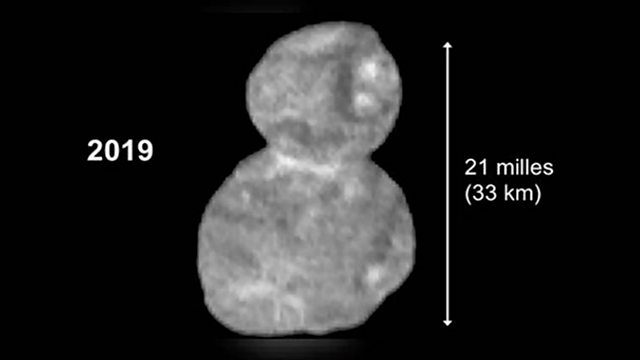
Beyond the Planets
Nasa鈥檚 fly-by of Ultima Thule, the most distant visited object in our solar system
It has been years in the planning and involved a tiny window of opportunity. Nasa鈥檚 New Horizons mission, launched in 2006, has reached its far flung destination, a couple of outer space snowballs known as Ultima Thule. The mission aims to shed light on the formation of our solar system.
And just days later an unmanned Chinese mission has landed on the moon, on the far side. They will be examining rocks and also seeing if simple plants and animals survive in a biosphere there.
We also look at the Indonesian Anak Krakatau volcano, which has erupted recently. Just why did it collapse into the sea creating a tsunami, and why is it so difficult to predict the impact of volcanic eruptions?
And we celebrate the periodic table -150 years old this year! This chart of chemical elements found on the walls of classrooms around the world still has much to reveal.
Birds are dinosaurs, but did their extinct relatives move, look, or even sing like their avian relatives? From revealing the hidden information within fossilised dinosaur footprints, to reading the messages left by muscle attachments on fossil bones and seeing how modern palaeo-artists have started to draw fluffy feathered Tyranosaurs, CrowdScience starts to reimagine dinosaurs as living animals.
Listener Malcolm asks about hopping dinosaurs while on a fossil finding mission with world expert Dr Peter Falkingham. And we explore the vaults of the Natural History Museum with Dr Susie Maidment and meet palaeo-artist Dr Mark Witton鈥檚 pet dinosaurs in his living room studio.
(Photo: The first high-definition picture of Ultima Thule. Credit: Nasa)
Last on
More episodes
Previous
Broadcasts
- Sun 6 Jan 2019 15:06GMT大象传媒 World Service Americas and the Caribbean
- Sun 6 Jan 2019 16:06GMT大象传媒 World Service News Internet
Podcast
-
![]()
Unexpected Elements
The news you know, the science you don't

